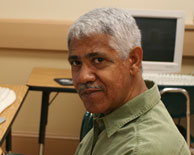The Marshall Plan
Overview
In the wake of World War II, the United States invested over $13 billion to help rebuild Western Europe. The Marshall Plan, as it came to be known, not only helped Europe and the world recover economically, but also served to strengthen post war alliances for the U.S., providing an important balance against Soviet power as the Cold War era began. Join Active Minds as we review this historic initiative and discuss its relevance in the world today.
Key Lecture Points
- In the aftermath of the devastation of World War II, the US Congress passed the Economic Cooperation Act of 1948, which authorized the implementation of the European Recovery Program (better known as the Marshall Plan). Over the course of 3 ½ years the US invested $13.3 billion in Europe to support post-war economic and political recovery from the devastation and destruction of the Second World War.
- The Marshall Plan was an important act of United States generosity, but it also helped the US situate its role in the post-war global order in the second half of the twentieth century.
- George Catlett Marshall came to national prominence as he served as Army chief of staff for the duration of the US engagement in World War II. After his service in the military he was tapped to be Secretary of State by President Harry Truman in 1947. The program that bears his name is considered his crowning achievement as an international statesman and servant of the US government.
- Mainstream historical discourse since the 1950s has seen the Marshall Plan as critical to European post-war economic recovery, but it was as much a story of the US establishing its political and military influence in Western Europe as a push back against Soviet expansion.
- In recent years, the Marshall Plan has become a euphemism for large-scale post-war or post-conflict reconstruction aid, which attempts to help economic activity recover while also rebuilding institutions. The Marshall Plan is often invoked when politicians and policymakers in the US and abroad call for such aid in other contexts.
- The Marshall Plan is emblematic of a global role that the US played for decades—seeking to support economic development and institution-building in the image of American democracy in all corners of the globe. The extent to which the US should continue playing this role has come to be questioned by President Donald Trump who has found political support for a more isolationist, “America First” approach to foreign policy and relationships with US allies abroad.
Discussion Questions
- The Marshall Plan has been invoked frequently in other post-conflict or post-disaster environments. To what extent is the Marshall Plan actually comparable to other programs to which it has been compared, or is it more of a linguistic and cultural euphemism?
- Consider the perspective of United States leaders in 1947. What are your primary concerns and motivations? What factors are you weighing in terms of foreign policy decisions?
- Imagine that you are the leader of a country coming out of violent conflict. What does your country need in terms of reconstruction? What type of international aid would be most helpful?
More to Explore
- Library of Congress info Click here
- George C. Marshall Foundation essays/interviews Click here
- The German Marshall Fund Click here
For Further Reading
- Hogan, Michael J. The Marshall Plan: America, Britain, and the reconstruction of Western Europe, 1947-1952. New York, NY: Cambridge University Press, 1987. 482 pages. The Marshall Plan was more than an effort to put American aid behind the economic reconstruction of Europe. American officials hoped to refashion Western Europe into a smaller version of the integrated single-market and mixed capitalist economy that existed in the United States.
- Jones, Bruce, ed. The Marshall Plan and the Shaping of American Strategy. Washington, DC. Brookings Institution Press, 2017. 120 pages. How the United States helped restore a Europe battered by World War II and created the foundation for the postwar international order.
- Mee, Charles, Jr. Saving a Continent: The Untold Story of the Marshall Plan. 2016. 572 pages. The imperial powers of the nineteenth century, having weakened one another in World War I, destroyed themselves in World War II. United States Secretary of State George C. Marshall had a plan. Here’s the story of that plan and the fascinating man who put it together.
- Steil, Benn. The Marshall Plan: Dawn of the Cold War. New York, NY: Simon & Schuster, 2018. 624 pages. In the wake of World War II, with Britain’s empire collapsing and Stalin's on the rise, US officials under new secretary of state George C. Marshall set out to reconstruct western Europe as a bulwark against communist authoritarianism.






Copyright © 2004-2025 Active Minds®. All rights reserved.
